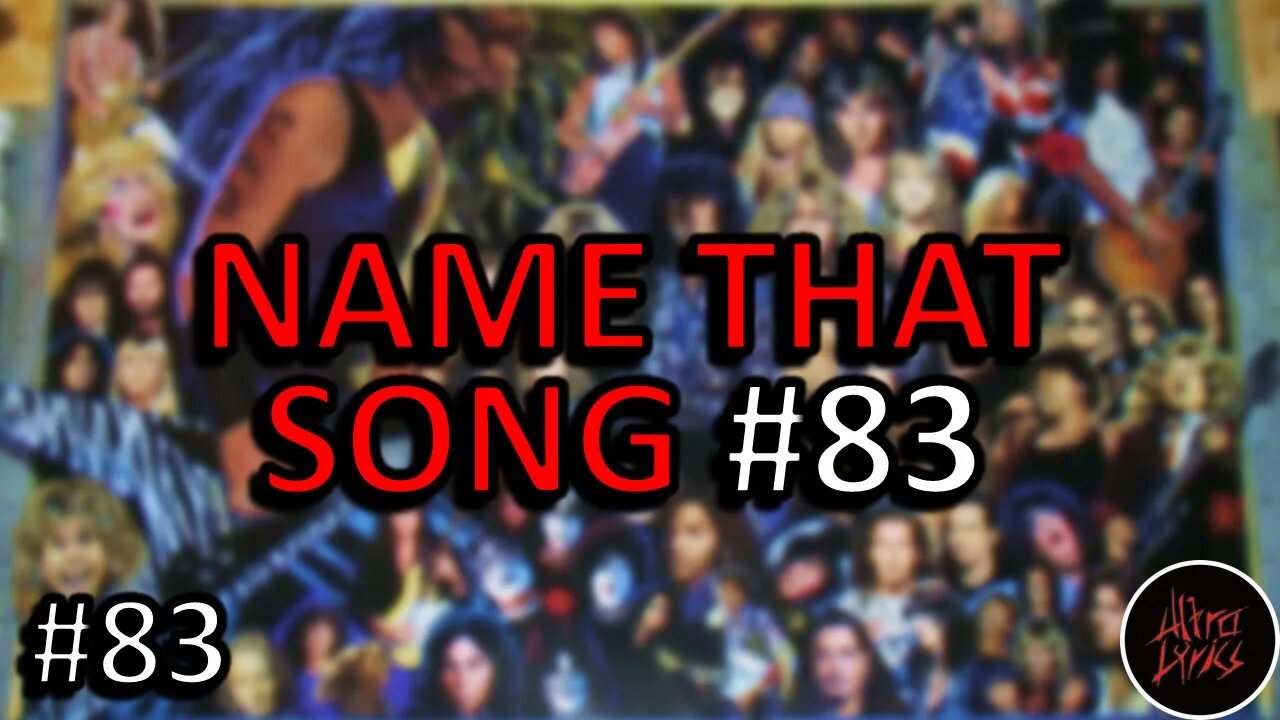Premium Only Content

NAME THAT SONG!🎤🎶🎸🥁 NO. 83
NAME THAT SONG!🎤🎶🎸🥁 NO. 83
I do not own any of the contents within this video. This video is for entertainment purposes. No copyright infringement is intended. Credits for the contents go to their respective owners.
#metal #metalshorts #guitarshorts #metalclips #heavymetalshorts #mysterymusician #guitar #music #metalmusic #heavymetal #guessthatmusician #thrashmetal #groovemetal #drums #rocknroll #studio #music #musicclips #musicshorts #musicshortsvideo
Wikipedia stuff
Heavy metal (or simply metal) is a genre of rock music that developed in the late 1960s and early 1970s, largely in the United Kingdom and United States.[2] With roots in blues rock, psychedelic rock and acid rock, heavy metal bands developed a thick, monumental sound characterized by distorted guitars, extended guitar solos, emphatic beats and loudness.
In 1968, three of the genre's most famous pioneers – Led Zeppelin, Black Sabbath and Deep Purple – were founded.[3] Though they came to attract wide audiences, they were often derided by critics. Several American bands modified heavy metal into more accessible forms during the 1970s: the raw, sleazy sound and shock rock of Alice Cooper and Kiss; the blues-rooted rock of Aerosmith; and the flashy guitar leads and party rock of Van Halen.[4] During the mid-1970s, Judas Priest helped spur the genre's evolution by discarding much of its blues influence,[5][6] while Motörhead introduced a punk rock sensibility and an increasing emphasis on speed. Beginning in the late 1970s, bands in the new wave of British heavy metal such as Iron Maiden and Saxon followed in a similar vein. By the end of the decade, heavy metal fans became known as "metalheads" or "headbangers". The lyrics of some metal genres became associated with aggression and machismo,[7] an issue that has at times led to accusations of misogyny.
During the 1980s, glam metal became popular with groups such as Bon Jovi, Mötley Crüe and Poison. Meanwhile, however, underground scenes produced an array of more aggressive styles: thrash metal broke into the mainstream with bands such as Metallica, Slayer, Megadeth and Anthrax, while other extreme subgenres such as death metal and black metal became – and remain – subcultural phenomena. Since the mid-1990s, popular styles have expanded the definition of the genre. These include groove metal and nu metal, the latter of which often incorporates elements of grunge and hip-hop.
Heavy metal is traditionally characterized by loud distorted guitars, emphatic rhythms, dense bass-and-drum sound and vigorous vocals. Heavy metal subgenres variously emphasize, alter or omit one or more of these attributes. In a 1988 article, The New York Times critic Jon Pareles wrote, "In the taxonomy of popular music, heavy metal is a major subspecies of hard-rock—the breed with less syncopation, less blues, more showmanship and more brute force."[8] The typical band lineup includes a drummer, a bassist, a rhythm guitarist, a lead guitarist and a singer, who may or may not be an instrumentalist. Keyboard instruments are sometimes used to enhance the fullness of the sound.[9] Deep Purple's Jon Lord played an overdriven Hammond organ. In 1970, John Paul Jones used a Moog synthesizer on Led Zeppelin III; by the 1990s, synthesizers were used in "almost every subgenre of heavy metal".[10]
The electric guitar and the sonic power that it projects through amplification has historically been the key element in heavy metal.[11] The heavy metal guitar sound comes from a combined use of high volumes and heavy fuzz.[12] For classic heavy metal guitar tone, guitarists maintain gain at moderate levels, without excessive preamp or pedal distortion, to retain open spaces and air in the music; the guitar amplifier is turned up loud to produce the "punch and grind" characteristic.[13] Thrash metal guitar tone has scooped mid-frequencies and tightly compressed sound with multiple bass frequencies.[13] Guitar solos are "an essential element of the heavy metal code ... that underscores the significance of the guitar" to the genre.[14] Most heavy metal songs "feature at least one guitar solo",[15] which is "a primary means through which the heavy metal performer expresses virtuosity".[16] Some exceptions are nu metal and grindcore bands, which tend to omit guitar solos.[17] With rhythm guitar parts, the "heavy crunch sound in heavy metal ... [is created by] palm muting" the strings with the picking hand and using distortion.[18] Palm muting creates a tighter, more precise sound and it emphasizes the low end.[19]
Source(s): https://en.wikipedia.org/wiki/Heavy_metal_music#External_links
NAME THAT SONG!🎤🎶🎸🥁 NO. 83
-
 3:27:31
3:27:31
SquallRush
1 day agoBrawlhalla Mondays!
34.5K1 -

Misfit Electronic Gaming
9 hours ago $4.48 earned"LIVE" It's So Monday So lets Perk it up. Lets Earn Gears"Party Animals" & R.E.P.O. Who will join me????
51.4K -
 54:13
54:13
Sarah Westall
9 hours agoCIA Disclosures: Ark of the Convenient, the Pyramid Code, Ley Lines & Earth’s Energy w/ Jason Shurka
97.4K23 -
 1:16:28
1:16:28
Kim Iversen
11 hours agoThere Was No COVID Virus! How We've All Been Duped By The Medical Establishment
161K325 -
 2:58:42
2:58:42
Crossplay Gaming!
7 hours agoLet's Check Out MORE Metroid Prime Remastered! (With the RTX 5090!)
47.7K3 -
 14:24
14:24
AlaskanBallistics
15 hours ago $1.65 earnedMDT HNT26 Chassis on A Remington 700 7mm Remington Magnum
39.1K9 -
 13:34
13:34
T-SPLY
11 hours agoCNN Is Now Accusing Trump Staff Of War Crimes
59.5K26 -
 1:33:25
1:33:25
2 MIKES LIVE
11 hours ago2 MIKES LIVE #199 Deep Dive Monday!
46.2K5 -
 54:40
54:40
LFA TV
15 hours agoThe World Realigns Against America | TRUMPET DAILY 3.31.25 7PM
41.3K18 -
 1:42:08
1:42:08
Redacted News
11 hours agoThis is getting out of hand! Dems firebomb GOP headquarters
146K324